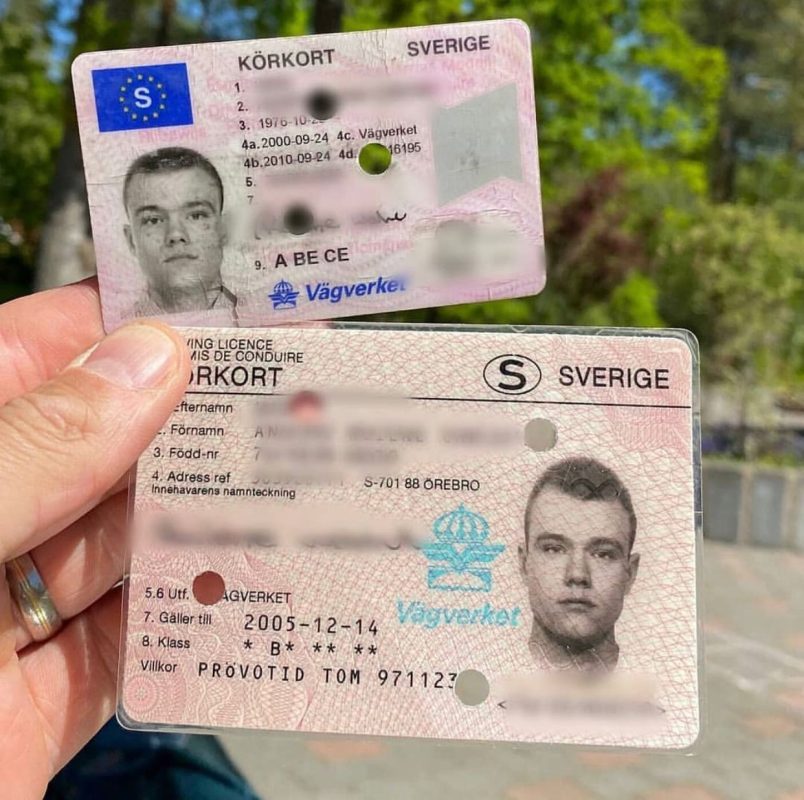The Future of Driving Licenses: ID Handling in 2025
As innovation continues to evolve at an unmatched rate, numerous sectors are embracing innovations to enhance user experience and performance. Among the areas experiencing considerable change is identity management, especially concerning driving licenses. With the intro of digital licenses and advanced identification methods, the landscape of driving license ID handling is anticipated to undergo significant changes by 2025. This post explores the awaited advancements in driving license ID handling, the ramifications for users, and answers regularly asked questions about the future of driving licenses.
The Evolution of Driving Licenses
Driving licenses have actually traditionally served as a method of determining an individual's authority to run a motor lorry. Köpa Ett Körkort serve multiple secondary purposes, consisting of age verification and identity confirmation for banking and travel. However, the physical card system has restrictions, consisting of dangers of counterfeiting, loss, and outdated information. As society seriously depends on effective and protected identification systems, the transition towards digital licenses is ending up being significantly popular.
Current Trends in Driving License ID Handling
- Digital Licenses: Many states are piloting digital driving licenses that allow users to save their qualifications on their smartphones. These digital licenses are developed with innovative security features, consisting of biometric data, and can be scanned or shared firmly.
- Blockchain Technology: Some jurisdictions are checking out blockchain to boost the security and authenticity of driving licenses. Juridiskt Körkort Online makes sure that information can not be damaged and that the information is easily proven.
- Facial Recognition: Increasingly used in identification practices, facial acknowledgment technology can speed up the procedure of validating an individual's identity against their driving license. This innovation likewise helps in reducing fraud and maintain the stability of the licensing systems.
- Multi-Functional Licenses: Future driving licenses may incorporate additional features such as health records, travel documents, and even payment systems, supplying an extensive identity solution.
The Benefits of Digital Driving Licenses by 2025
The shift towards digital driving licenses presents numerous advantages, consisting of:
- Convenience: Users can access their licenses anytime, which gets rid of the requirement for physical cards. This is especially beneficial when individuals forget their license, as digital copies can be retrieved quickly.
- Security: Advanced security procedures can minimize the danger of identity theft, scams, and unauthorized duplication. Digital licenses often include encryption and biometric verification.
- Performance: Reduced wait times at government workplaces and throughout traffic stops, as law enforcement can validate digital licenses immediately.
Implications for Users
While the developments in driving license ID dealing with present various benefits, they also come with challenges. Users need to adapt to new technology and guarantee they understand the changes and their ramifications. Here are some factors to consider:
- Privacy Concerns: With increased digital footprints, there will be increased concerns over data privacy and how biometric data is stored and used.
- Accessibility Issues: Individuals without access to smart devices or digital innovations might deal with barriers to getting and making use of digital licenses.
- Regulatory Compliance: With different jurisdictions adopting different systems and processes, users should understand their regional laws regarding digital licenses and recognition.
Anticipated Changes in Driving License ID Handling by 2025
| Aspect | Current Status | Expected Change by 2025 |
|---|---|---|
| License Format | Physical cards | Primarily digital licenses |
| Confirmation Process | Manual checks | Automated biometric verification |
| Security Measures | Standard holograms and features | Advanced file encryption and blockchain |
| Jurisdictional Differences | Fragmented processes throughout states | More standardized national systems |
| User Interaction | In-person renewals and checks | Mobile applications for management |
Frequently asked questions
1. What is a digital driving license?A digital driving license is an electronic version of a standard driving license that is kept on a mobile device. It can be utilized for identification and confirmation in various circumstances, with boosted security functions to avoid scams.
2. How will digital licenses improve security?Digital licenses use file encryption and biometric data, making them harder to forge or misuse compared to traditional cards. Furthermore, blockchain innovation can guarantee data credibility and stability.
3. Will everybody be needed to change to a digital license?While numerous jurisdictions are moving toward digital licenses, policies might differ. Users are motivated to contact their regional licensing authorities for specific guidelines.
4. What are the prospective disadvantages of digital licenses?Some possible drawbacks include personal privacy issues relating to data storage, availability issues for individuals without smart devices or digital literacy, and the requirement for a robust regulative framework to manage security and user rights.
5. How can I prepare for the shift to digital licenses?Stay notified about regional efforts relating to digital licenses, explore readily available mobile applications for handling recognition, and cultivate digital literacy to browse brand-new innovations confidently.
The future of driving licenses and ID handling is poised for substantial development by 2025. As digital licenses become more common, users will experience improved security, convenience, and effectiveness. However, together with the benefits come difficulties that will require public awareness and adaptation. Köp Svenskt Körkort need to focus on education, regulation, and accessibility to ensure a smooth shift that empowers individuals with the identification tools of the future. As technology advances, so too will the methods through which society manages identity, especially vital in processes as essential as operating an automobile.

